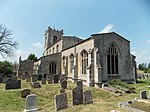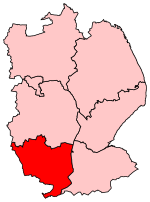Corby Glen
Civil parishes in LincolnshireSouth Kesteven DistrictUse British English from September 2023Villages in Lincolnshire

Corby Glen is a village and civil parish in the South Kesteven district of Lincolnshire, England. It is approximately 9 miles (14 km) south-east of the market town of Grantham and 8 miles (13 km) north west of Bourne.
Excerpt from the Wikipedia article Corby Glen (License: CC BY-SA 3.0, Authors, Images).Corby Glen
Moreley's Lane, South Kesteven Corby Glen
Geographical coordinates (GPS) Address Nearby Places Show on map
Geographical coordinates (GPS)
| Latitude | Longitude |
|---|---|
| N 52.812619 ° | E -0.51816988 ° |
Address
Moreley's Lane
Moreley's Lane
NG33 4NL South Kesteven, Corby Glen
England, United Kingdom
Open on Google Maps











